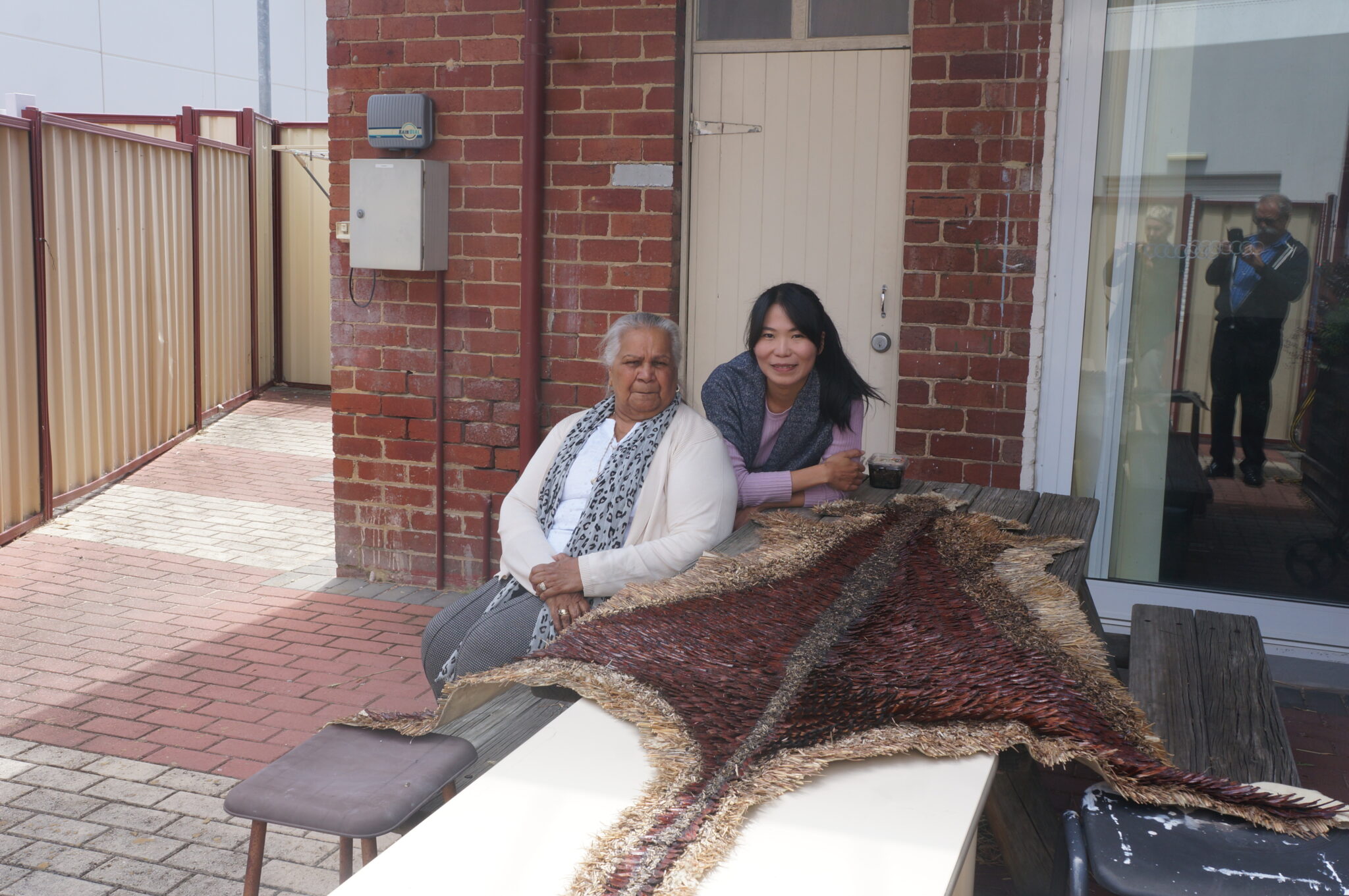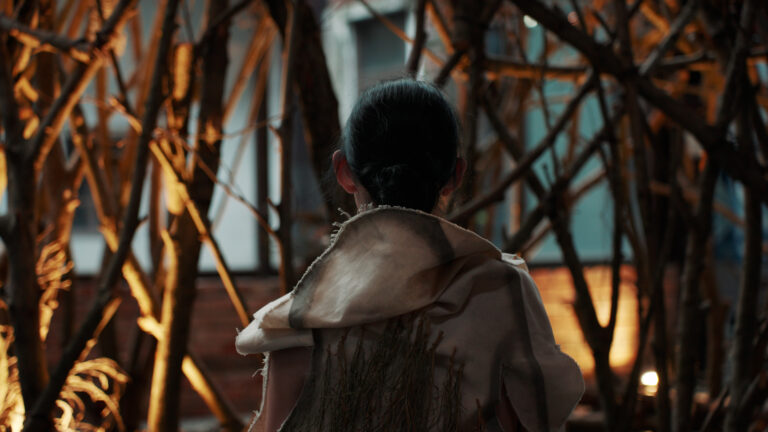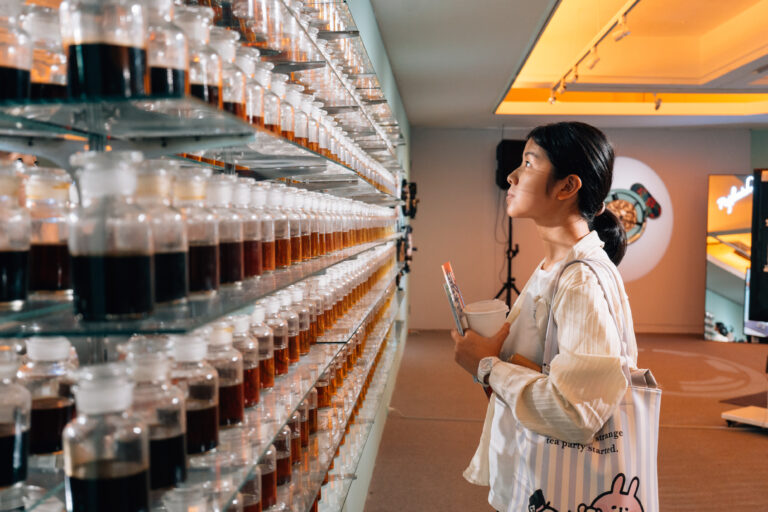Protective Layers: Kangaroo Hide & Fox Pelt
Mix-Media Installation
Materials: grass tree trunk, kangaroo grass, wheat, barley, canola seeds, wool blanket, Limestone sand
Unique Ecology of Western Australia
When I first visited Australia in 2019, the exotic, native vegetation and the distinct, rocky landscape fascinated me. I became interested in the development of the Wheatbelt region. It has significantly affected the landscape in Western Australia. I learned about the unique ecology of the region including the native grass tree (Balga) whose seeds burst out and re-germinate after wildfires. The Kangaroo grass is a crucial food crop for the local aboriginal people for its drought-tolerant qualities. These have been gradually replaced by cash crops such as wheat, barley, canola, etc. in the Wheatbelt region. On a satellite map image, the land appears to be very clearly divided. Native vegetation survives in the Wheatbelt region in a small amount, scattered, like isolated islands.
Kangaroo Hide
I decided to use the native vegetation: Australian grass tree and the Kangaroo grass to create a Kangaroo Hide work. I think of animal hides as protective layers and this Kangaroo Hide implies the protection of the earth by vegetation, as well as the close relationship between the Kangaroos and the local aboriginal people, the Nyoongar. The aboriginal elders recounted oral histories about their totems, taboos, and rituals, and I heard from them about everyday habits such as wearing the Kangaroo skin and making a fire by the river to keep warm. The modern farming methods have gradually altered the native landscape and its delicate ecological balance is threatened.
Fox Pelt
Wheat from Western Australia is an important cash crop and is exported to Taiwan and other Asian countries in large quantities. I incorporated Western Australia’s modern commodities such as wheat, barley, and canola seeds, and limestone powder in creating a Fox Pelt to express the phenomenon of native species and their habitat being squeezed out by the foreign invasive species. The introduction of hares and foxes to Australia by the European settlers has caused a major imbalance to the Australian ecosystem. Among the native animal species, the Dingo population has dwindled and the Tasmanian Tiger has gone extinct due to hunting by humans. On the other hand, Kangaroos have multiplied. This work is a way to reconsider the relationship between humans and the natural environment.
Presented at “Unfolding Acts“, Perth Institute of Contemporary Arts
2019.10.19 – 2020,1.05
Perth Institute of Contemporary Arts
51 James St
Perth, WA
Australia
Postscript
The making of this work involved consultations and discussions with many people, including a memorable meeting with Nyoongar elder May McGuire, who generously gave her time to see the work in progress and share her knowledge about Balga trees and kangaroos, and their significance within Nyoongar culture. It was a real privilege to meet her and to receive her permission and blessing in presenting this work.

Photo was taken by Amy Barrett-Lennard at Lo Yi-Chun’s studio courtyard in Perth on October 16th, 2019.


